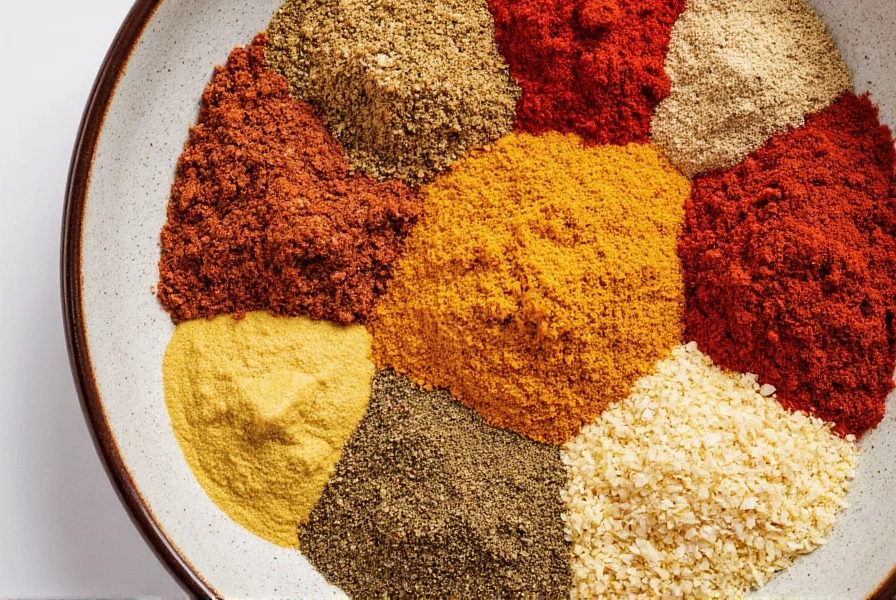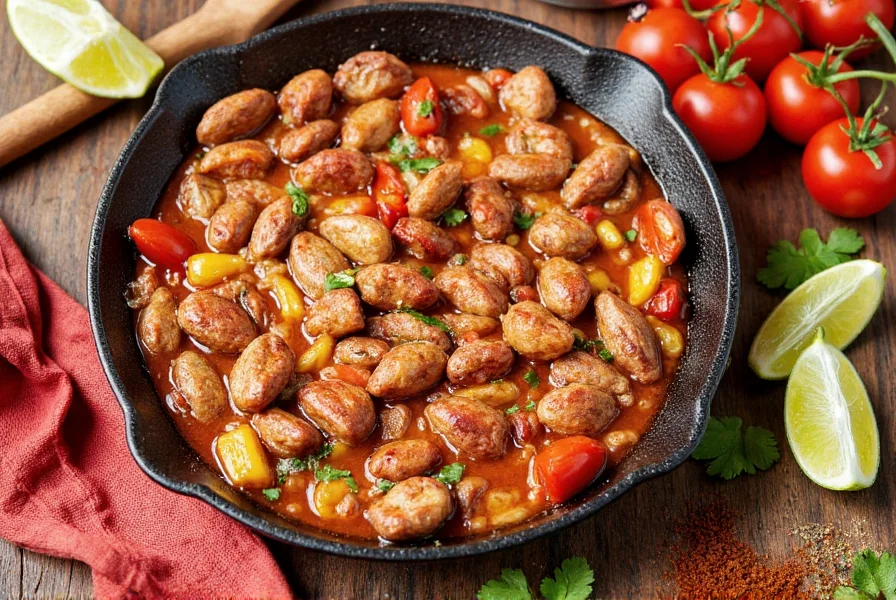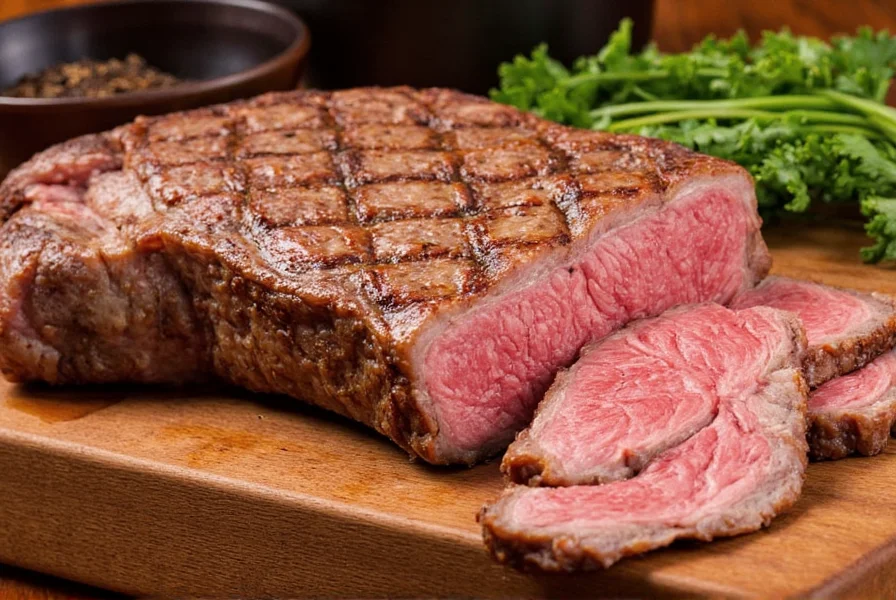Table of Contents
Introduction
The essential spices for authentic fajitas are cumin, paprika, oregano, garlic powder, onion powder, chili powder, and black pepper. Each plays a crucial role in creating the bold, smoky, and savory flavors that define this popular dish. Whether you're a seasoned chef or a beginner, mastering these spices will elevate your fajitas from good to unforgettable. In this guide, we'll explore why these spices matter, how to use them like a pro, and avoid common mistakes.

Why Spices Matter in Fajitas
Fajitas are typically made with grilled meat (like chicken, beef, or shrimp), sautéed vegetables, and warm tortillas. While the base ingredients are important, it's the spices that bring out the flavor and create that signature zing. Think of spices as the secret sauce that makes your fajitas stand out. They not only enhance taste but also add depth, aroma, and visual appeal.
Must-Have Spices for Fajita
Here are the essential spices that every fajita lover should have in their pantry:
- Cumin: Adds an earthy, nutty flavor that's key to authentic fajitas.
- Paprika: Offers a smoky sweetness that enhances both meat and veggies.
- Oregano: Brings a slightly bitter, herbal note that complements the other spices.
- Garlic Powder: Provides a subtle garlic flavor without the need for fresh cloves.
- Onion Powder: Enhances the savory depth of the dish.
- Chili Powder: Adds a mild heat and a hint of smokiness.
- Black Pepper: Adds a sharp, peppery kick that rounds out the flavors.

Comparison Table: Key Spices for Fajita
| Spice | Flavor Profile | Best Used With |
|---|---|---|
| Cumin | Earthy, Nutty | Beef, Chicken, Vegetables |
| Paprika | Smoky, Sweet | Grilled Meats, Sautéed Veggies |
| Oregano | Herbal, Slightly Bitter | Tomatoes, Beans, Tortillas |
| Garlic Powder | Subtle Garlic | All Dishes, Especially Meat |
| Onion Powder | Savory, Sweet | Vegetables, Grilled Meats |
| Chili Powder | Mild Heat, Smoky | Spicy Fajitas, Sauces |
| Black Pepper | Peppery, Sharp | Any Dish, Especially Tacos |

How to Use These Spices Like a Pro
Knowing which spices to use is just half the battle—using them effectively is the other half. Here are some tips to help you get the most out of your spice collection:
- Season Early: Sprinkle spices over the meat and vegetables before cooking to let the flavors develop.
- Balance the Flavors: Don't be afraid to experiment. A pinch of cumin here, a dash of chili powder there—find what works for your taste.
- Use Fresh Spices: Fresh spices are more aromatic and flavorful than old ones. Store them in a cool, dark place to preserve potency.
- Combine Wisely: Some spices pair well together (like cumin and paprika), while others might clash. Stick to the classics unless you're feeling adventurous.
- Add at the End: For a more pronounced flavor, sprinkle certain spices like oregano or black pepper after cooking.

Buying Guide for Spices for Fajita
When purchasing spices for fajitas, focus on freshness and quality. Here are key tips:
- Cumin: Choose ground cumin with a strong earthy aroma. Avoid packages that are old or have a weak smell. Look for products with no additives.
- Paprika: Select vibrant red paprika with a smoky scent. Smoked paprika is ideal for fajitas to add depth.
- Oregano: Opt for dried oregano that is fragrant and greenish-brown. Avoid brown or dusty-looking oregano.
- Garlic Powder: Choose fine-ground garlic powder without added salt. It should have a strong garlic aroma.
- Onion Powder: Look for fine powder with a sweet, onion-like scent and no clumps.
- Chili Powder: Ensure it has a deep red color and balanced heat. Avoid powders with visible seeds or inconsistent texture.
- Black Pepper: Freshly ground black pepper provides the best flavor, but pre-ground should have a strong aroma and no dullness.

Common Mistakes to Avoid
Even the best chefs can make mistakes when it comes to seasoning. Here are a few common errors to watch out for:
- Overseasoning: Too much spice can ruin the balance. Start with a small amount and adjust as needed.
- Using Old Spices: Spices lose potency over time. Check expiration dates and store properly.
- Not Balancing Flavors: Don't rely solely on one spice. Mix and match for a well-rounded taste.
- Skipping the Salt: Salt is essential for bringing out the flavors of other spices. Don't forget it!

Frequently Asked Questions About Spices for Fajita
What are the essential spices for authentic fajitas?
The essential spices for authentic fajitas include cumin, paprika, oregano, garlic powder, onion powder, chili powder, and black pepper. Cumin provides that earthy base note, paprika adds smokiness, while garlic and onion powders create savory depth. Together, these spices form the foundation of traditional fajita seasoning.
Can I make my own fajita seasoning blend?
Absolutely! Making your own fajita seasoning is simple and allows you to control the ingredients. A basic blend includes 2 tablespoons chili powder, 1 tablespoon cumin, 1 teaspoon paprika, 1 teaspoon garlic powder, 1 teaspoon onion powder, 1/2 teaspoon oregano, 1/2 teaspoon black pepper, and 1 teaspoon salt. Mix these together and store in an airtight container for up to 6 months.
How much seasoning should I use per pound of meat?
For best results, use about 1.5 to 2 tablespoons of seasoning blend per pound of meat. If you're making your own blend, remember to include salt in your measurements. It's always better to start with less and add more after tasting, as you can always increase the seasoning but you can't remove it once added.
What's the difference between chili powder and cayenne pepper in fajitas?
Chili powder is a blend of ground chilies and other spices like cumin and garlic, offering mild heat with complex flavor. Cayenne pepper is pure ground chili with significantly more heat. For traditional fajitas, chili powder is preferred as it provides the right balance of flavor and mild heat. If you want extra spice, add cayenne sparingly - just 1/8 to 1/4 teaspoon per pound of meat.
How should I store my spices to keep them fresh for fajitas?
Store spices in airtight containers away from heat, light, and moisture - a cool, dark pantry is ideal. Whole spices last longer (up to 4 years) than ground spices (1-2 years). To test freshness, rub a small amount between your fingers - if the aroma is weak, it's time to replace them. Properly stored spices maintain their potency and ensure your fajitas have vibrant flavor.
Can I use fresh herbs instead of dried spices for fajitas?
Yes, but with adjustments. Fresh herbs have more water content and milder flavor than dried spices. Use about three times the amount of fresh herbs compared to dried (e.g., 1 teaspoon dried oregano = 1 tablespoon fresh oregano). Fresh cilantro works well as a garnish, but for the main seasoning, dried spices are preferred as they withstand high-heat cooking better and provide more concentrated flavor.
Conclusion
Spices for fajita are more than just a seasoning—they're the soul of the dish. Whether you're making a classic chicken fajita or trying something new, the right blend of spices can take your meal to the next level. From cumin to chili powder, each spice plays a role in creating that unforgettable flavor. So grab your favorite spices, season with confidence, and enjoy every bite of your homemade fajitas!










 浙公网安备
33010002000092号
浙公网安备
33010002000092号 浙B2-20120091-4
浙B2-20120091-4